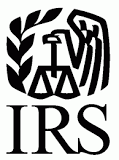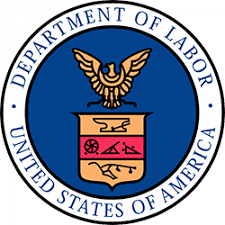The Internal Revenue Service released Notice 2023-75 announcing cost of living adjustments affecting dollar limitations for pension plans and other retirement-related items for tax year 2024.
Highlights Affecting Plan Sponsors of Qualified Plans for 2024
- The contribution limit for employees who participate in 401(k), 403(b), most 457 plans, and the federal government’s Thrift Savings Plan is increased from $22,500 to $23,000.
- The limitation used in the definition of highly compensated employee under Section 414(q)(1)(B) is increased from $150,000 to $155,000.
- The limitation on the annual benefit under a defined benefit plan under Section 415(b)(1)(A) is increased from $265,000 to $275,000.
- The limitation for defined contribution plans under Section 415(c)(1)(A) is increased from $66,000 to $69,000.
- The annual compensation limit under Sections 401(a)(17), 404(l), 408(k)(3)(C), and 408(k)(6)(D)(ii) is increased from $330,000 to $345,000.
- The dollar limitation under Section 416(i)(1)(A)(i) concerning the definition of “key employee” in a top-heavy plan is increased from $215,000 to $220,000.
- The dollar amount under Section 409(o)(1)(C)(ii) for determining the maximum account balance in an employee stock ownership plan subject to a five year distribution period is increased from $1,330,000 to $1,380,000, while the dollar amount used to determine the lengthening of the five year distribution period is increased from $265,000 to $275,000.
- The limitation under Section 408(p)(2)(E) regarding SIMPLE retirement accounts is increased from $15,500 to $16,000.
- The limit on annual contributions to an IRA increased from $6,500 to $7,000. The additional catch-up contribution limit for individuals aged 50 and over is now subject to an annual cost-of-living adjustment, but remains $1,000 for 2024.
The IRS previously updated Health Savings Account limits for 2023. See our post here.
The following chart summarizes various significant benefit Plan limits for 2022 through 2024:
| Type of Limitation | 2024 | 2023 | 2022 |
| 415 Defined Benefit Plans | $275,000 | $265,000 | $245,000 |
| 415 Defined Contribution Plans | $69,000 | $66,000 | $61,000 |
| Defined Contribution Elective Deferrals | $23,000 | $22,500 | $20,500 |
| Defined Contribution Catch-Up Deferrals | $7,500 | $7,500 | $6,500 |
| SIMPLE Employee Deferrals | $16,000 | $15,500 | $14,000 |
| SIMPLE Catch-Up Deferrals | $3,500 | $3,500 | $3,000 |
| Annual Compensation Limit | $345,000 | $330,000 | $305,000 |
| SEP Minimum Compensation | $750 | $650 | $650 |
| SEP Annual Compensation Limit | $345,000 | $330,000 | $305,000 |
| Highly Compensated | $155,000 | $150,000 | $135,000 |
| Key Employee (Officer) | $220,000 | $215,000 | $200,000 |
| Income Subject To Social Security Tax (FICA) | $168,600 | $160,200 | $147,000 |
| Social Security (FICA) Tax For ER & EE (each pays) | 6.20% | 6.20% | 6.20% |
| Social Security (Med. HI) Tax For ERs & EEs (each pays) | 1.45% | 1.45% | 1.45% |
| SECA (FICA Portion) for Self-Employed | 12.40% | 12.40% | 12.40% |
| SECA (Med. HI Portion) For Self-Employed | 2.90% | 2.90% | 2.90% |
| IRA Contribution | $7,000 | $6,500 | $6,000 |
| IRA Catch-Up Contribution | $1,000 | $1,000 | $1,000 |
| HSA Max. Contributions Single/Family Coverage | $4,150/ $8,300 | $3,850/ $7,750 | $3,650/ $7,300 |
| HSA Catchup Contributions | $1,000 | $1,000 | $1,000 |
| HSA Min. Annual Deductible Single/Family | $1,600/ $3,200 | $1,500/ $3,000 | $1,400/ $2,800 |
| HSA Max. Out Of Pocket Single/Family | $8,050/ $14,100 | $7,500/ $15,000 | $7,050/ $14,100 |


